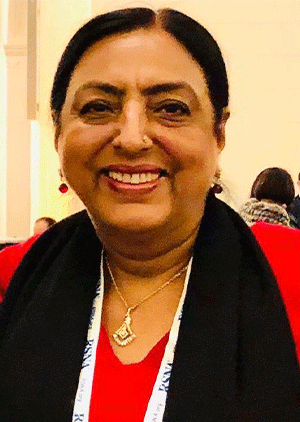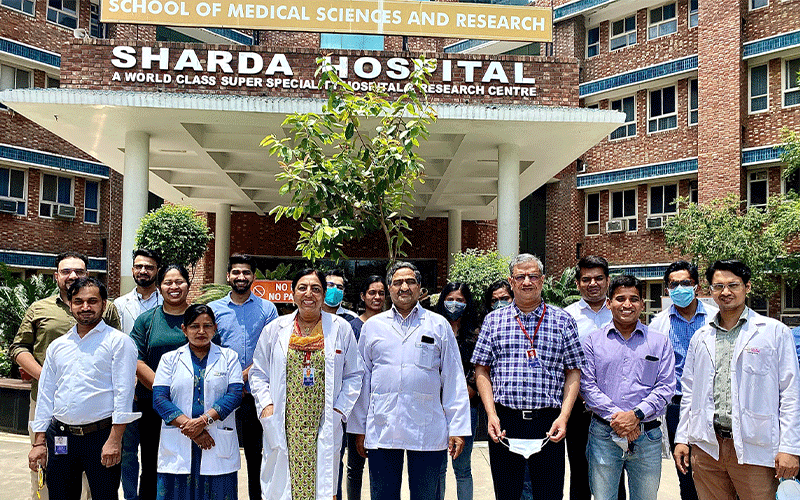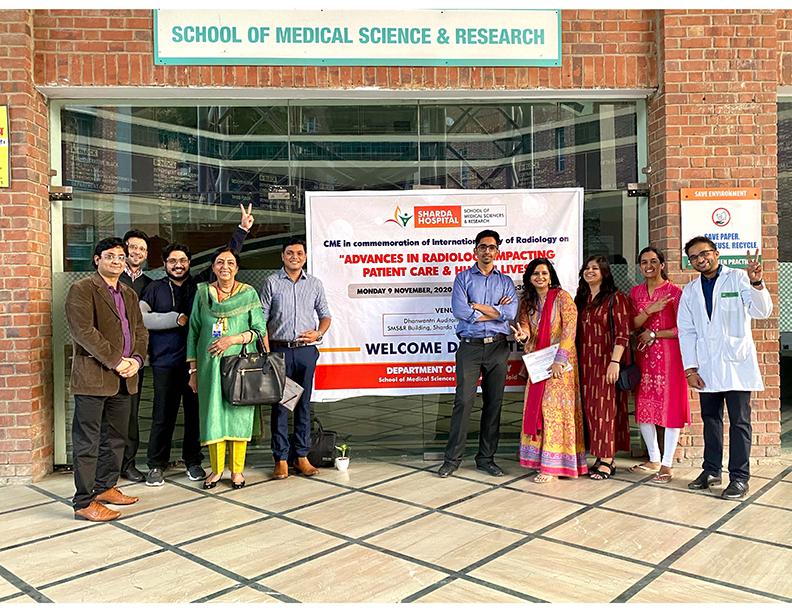My Turn
COVID-19 Devastates India

Shabnam B. Grover, MD, an academic radiologist with over 35 years of teaching experience, is currently a professor in the Department of Radiology at the School of Medical Science and Research and Sharda Hospital, Sharda University, National Capital Region of Delhi, India. She is an associate editor of the Indian Journal of Radiology and a reviewer for numerous international radiology journals of high repute.
During early April 2021, our institute, Sharda School of Medical Sciences and Research, Sharda Hospital, a super specialty hospital in Noida (a satellite town of Delhi), had so many COVID-19 patients that all regular medical services were shut down and we converted ourselves, as did most large hospitals in the area, into a dedicated COVID hospital.
Sharda Medical School-Hospital has a team of four senior professors, four assistant professors and 25 residents in the Department of Radiology. The department is well equipped with state-of-the-art technology, including a 128-slice GE CT scanner and a PACS.
The Pandemic and the Radiologist
Until mid-May, we were flooded with over 50 new daily admissions and the COVID wards were managed by senior faculty, junior faculty and residents in a format most appropriately called “war rooms.”
Dealing with critically sick patients on one hand and their anxious family members on the other is a daunting task. The senior faculty in the war rooms not only closely supervised the treating team of doctors, but also judiciously handled the patients’ anxious family members.

Realigning the Available Radiology Staff to Optimize Care
In order to provide the much needed radiology support, we skillfully designed a rotation of teams to handle the imaging services around the clock. In a 24-hour period, chest radiographs of 50 to 60 COVID patients were routinely acquired, which we reported within 15-20 minutes of the acquisition.
Subsequently, within a few hours every patient underwent a high-resolution CT (HRCT), which was equally expeditiously reported. We sometimes had to switch to a stroke study on CT/MR or to a
paranasal sinus protocol in a few patients who were suspected to have a secondary fungal infection.
In the midst of coping with all the work stress and crises, by early May four of our residents and a young technologist all contracted a mild COVID infection, despite taking all precautions. Sadly, one of our senior surgery faculty, an extremely dedicated professional, also passed away in our own hospital, despite all efforts. We all miss him dearly.
The unfortunate loss of so many lives, both young and old, has been sad and shocking. Many of us have suffered personal loss of precious lives in this cruel pandemic. However, we still attended work conscientiously, often even during home hours, and continued to provide scan reports expeditiously, albeit remotely.
Radiologists have been indispensable members of the war teams. The younger radiology faculty manned the administrative headquarters of the war rooms while senior faculty handled the avalanche of all post haste reporting and also continued teaching in a tsunami of webinars. All this while we fought our own sorrows and despair of losing relatives, friends and colleagues.

Future Outlook
We are keeping our spirits up and praying for a permanent end to this deadly havoc. We have seen a recent respite, going from 60-plus daily patients to only a few. We hope the downward trend of the virus continues and life slowly and steadily flows back to a more normal and sane rhythm.
To my mind, the greatest need of the hour is threefold:
First and foremost, both radiologists and treating clinicians need to adjust for post-COVID complications. Planning is needed to realign diagnostic and therapeutic facilities, including dedicated outpatient clinics to manage post-COVID treatment.
Secondly, radiology departments must simultaneously redesign appointment schedules and examination protocols for post-COVID complications. Increased interaction with clinical and laboratory colleagues on a daily case-by-case basis would certainly improve patient care.
Thirdly, as medical professionals we need to continue putting forward our best for as long as we can without giving in to despair. This requires a focus on relieving fatigue and mental stress for all health care professionals, with active support from hospital management.
My Thoughts
In order to achieve the WHO’s “health for all” goal, local governance can still improve globally. Every society, municipality, state and nation needs to realize that human health and health care professionals are their most valuable security asset. Therefore, health care planning needs to be more realistic, more generous, and accomplished with adequate inputs from widely inclusive teams of experienced health care professionals.
I pray less chaotic times will prevail very soon.